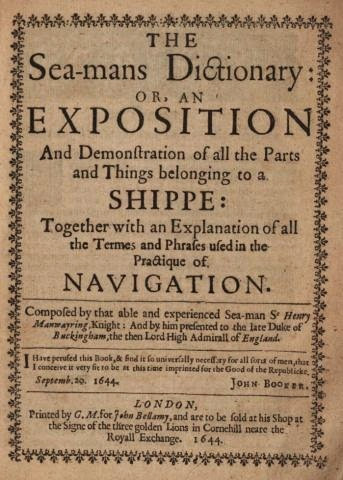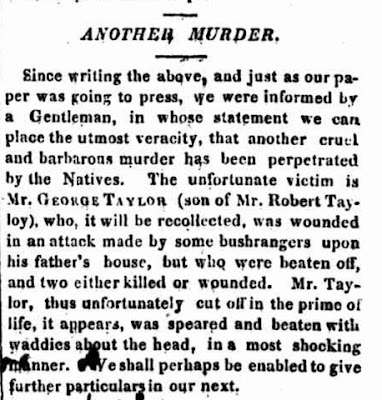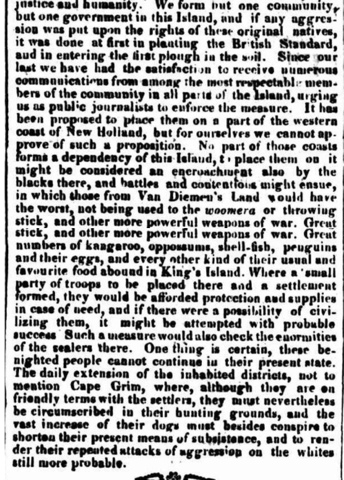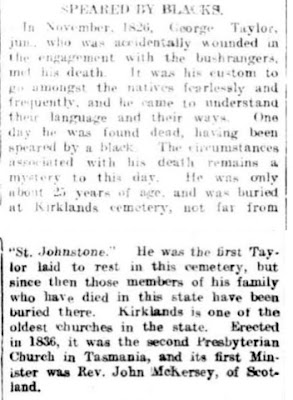My sixth great grandfather was a soldier and Irish landholder named Thomas Palliser (abt 1661 – 1756). Born in Yorkshire, he came to Ireland with the English Army during the Williamite War of 1688 – 1691. In 1689 he was a Captain of the Grenadiers in Sir Thomas Gower’s Regiment of Foot which was later merged with the regiment of Lord Drogheda. Palliser is mentioned several times in George Story‘s An impartial history of the wars of Ireland : page 14 at Newry, page 59 captured some prisoners, page 69 captured in an ambush in April 1691 and taken prisoner of war; he escaped from Limerick in June. He served through the second siege of Limerick and was severely wounded. When his regiment was disbanded in 1698 he went on to half-pay with the rank of major. He retired not long after 1704 having been commissioned as Lieutenant-Colonel in 1702.
Palliser was High Sheriff of County Wexford in 1700. In 1702 he was given a grant of the Great Island (Greatisland near Kilmokea), Wexford, by James, 2nd Duke of Ormonde.
Palliser built himself a mansion named Portobello near Campile, County Wexford. Campile is just under six kilometers from Greatisland and fourteen kilometres from the town of New Ross.
Portobello house has since burnt down, probably in the late 1700s, and no trace survives.
In 1746 Palliser, then aged about 85, was robbed at his mansion by James Freney (1719–1788) , an infamous Irish highwayman. Oddly enough, in 1754 Freney published a history of his misadventures, with the title The Life and Adventures of James Freney, commonly called Captain Freney. In his book he refers to the robbery of Colonel Palliser.
Freney and his gang made off with:
- A purse of 90 guineas and a 4 pound piece
- Two moidores, a gold coin which was the principal coin current in Ireland at the beginning of the 18th century; two moidores was worth 30 shillings
- Some small gold
- A large glove containing 28 guineas in silver
- A quantity of plate worth 300 pounds
- A gold watch
Freney was proclaimed an outlaw in January 1749 and surrendered three months later. Lord Carrick, a lawyer, helped Freney work out a deal with the chief justices in which Freney would be allowed to emigrate. Presumably it was feared that his execution would give him the status of a folk hero and lead to further disturbances.
It is not known where or how long Freney spent abroad, but by 1776 he was once more in Ireland, where he found employment as a customs official at the port of New Ross, County Wexford, a post he held until his death in 1788. Freney was buried in Inistioge , County Kilkenny.
From page 30 of The life and adventures of James Freney, commonly called Captain Freney. From the time of his first entering the highway, in Ireland, to the time of his surrender, being a Series of Five Years remarkable Adventures. Written by himself. First published 1754 :
In some time after Bulger came to pay me a visit, and we concluded to take to the high road, and were three days on the Ross road, but met with no prey worth mentioning. And in a short time after, we met with one Thomas Houlahan and one Patrick Hacket, otherwise called Bristeen, who were experienced sheep-stealers, and particular acquaintances of Bulger’s, who saluted Bulger kindly, and asked him how he was: To which he replied, that he would do well enough if he had a little more money; and asked them how they fared, for that he had not seen them a long time. They answered, they removed to the county of Wexford, but that they were uneasy to know how their correspondents in that country were (meaning the country of Kilkenny ) and further said; that there was plenty of money in the country they came from. They also informed him, that there was a gentleman, one colonel Palliser, who had a great deal of money, and plate, which they heard he kept in his house. I was during the time of their discourse some distance from them; upon which Bulger came up to me, and told me, that the persons I saw him talking to, were friends of his, for whose honesty and integrity he would engage, and then related the whole information they gave him of colonel Palliser’s plate, &c. Upon which, I agreed we should rob the colonel, and came up to Hacket and Houlahan, and saluted them kindly, and soon concluded upon a night to put our design of robbing the colonel in execution, I then asked them if they knew the inside of the house, or how many servants were in it ? But they said not, but that they knew the way to it, and no more. I soon said, that as we did not know how many were in the house, that we should take the more men with us. Upon which I immediately sent Bulger to Kinehan’s, to Burnt-Church, to inquire of him, where John Motley was. He soon returned with Motley, and one Commons. I had also one Matthew Grace another Cotter under Mr. Robbins, whom I had corrupted, and prepared for the purpose. And then Bulger, Motley, Grace, Commons, Houlahan and Hacket, (who were our spies) and I sent to Balley-cough-soust, in the county of Kilkenny, which was the place at which we intended to settle and advise which way to effect our design, and expedite our journey. Upon which I concluded, that two only should go in at a time, for fear, if we went in a body, we might be suspected. But we had a long debate, each man refusing to carry the arms, for fear of being suspected going over the ferry. But at length I contrived it so, that I got a bag and put the arms into it, which were three cases of pistols, and rolled hay about them, and then Grace agreed to carry them in the bag, as if he was going to Ross market, which he accordingly did, and got to the house in which I appointed to meet him undiscovered. When I came over the Ferry, I went to the house appointed, where my companions were stationed two in a company, the better to avoid suspicion, and they they did not seem to know each other. I then asked the landlady had she a stable for my mare ? she said the had : upon which I went to the stable to see whether there was hay and litter for my mare, but found it was very dirty, of which I told the landlady, and that I would send my mare down to Mr.Brahan’s, as I was known there, and could get her out at any hour, without any room for suspicion. t then took care to go into the next room to my companions, and called in the landlord to drink with me, and finding the proper time for our departure at hand, I walked out into the kitchen where Grace was, and spoke to Grace, as follows: ” But is not this Grace ? how long are you here ? how are all the neighbours ?,When do you intend going home ? What business had you here ?” To which he answered, they were all well, and that he came with some things to market.
In a little time I found an opportunity, and gave Grace the whisper to desire the rest to go on, two by two, a part of the road, and that one of the spies should go down to Brahan’s, under pretence of taking care of my mare, and that the other spy should go with my companions to direct them. When it was duskish, I went down to Mr. Brahan’s, called for a bottle of wine, and soon after desired the hostler to draw out my mare, for that I intended to go a little further. I soon mounted with my spy behind me, and had not rode far before I overtook the rest of my companions; we then joined company till we got near Mr. Palliser’s House, where I fixed the men in a safe place, and took one of the spies down towards the house, and came to near the house as to see the light of the candles. I then took a survey of the front of the house and rooms, that by the quenching of the candles, I might the better judge where the colonel and his men lay. I waited for some time near the house fronting the rooms, and in a short time saw one of the colonel’s servants lighting him to bed, and therefore judged what part of the house the colonel lay in. Some time afterwards I observed a light above stairs, by which I judged the servants were going to bed; and soon after observed that the candles were all quenched, by which I assured myself, they were all gone to bed. I then came back to where the men were, and appointed Bulger, Motley and Commons to go in along with me, but Common answered, that he never had been in any house before, where there were arms; upon which I asked the son of a whore, what business he had there, and swore I would as soon shoot him as look at him, and at the same time cocked a pistol to his breast, but the rest of the men prevailed upon me to leave him at the back of the house, where he might run away when he thought proper.
I then asked Grace, where did he choose to be posted, he answered ‘that he would go where I pleased to order him,’ for which I thanked him ; we then immediately came up to the house, lighted our candles and blackened our faces, I then placed Commons and Houlahan at the back of the house, to prevent any person from coming out that way; and placed Hacket on my mare, well armed, at the front; and I then broke one of the windows with a sledge, whereupon Bulger, Motley, Grace, and I got in, upon which I ordered Motley and Grace to go up stairs, and Bulger and I would stay below, where we thought the greatest danger would be, but I immediately upon second consideration, for fear Motley or Grace should be daunted, desired Bulger to go up with them, and when he had fixed matters above, to come down, as I judged the colonel lay below. I then went to the room where the colonel was, and burst open the door, upon which he said, odds-wounds, who is there ? to which I answered, a friend, Sir, upon which he said, you lie by G– d, you are no friend of mine, I then said that I was, and his relation also, and that if he viewed me close he would know me, and begged of him not to be angry; upon which, I immediately seized a bullet gun and case of pistols, which I observed hanging up in his room. I then quitted his room, and walked round the lower part of the house, thinking to meet some of the servants, whom I thought would strive to make their escape from the men who were above, and meeting none of them, I immediately returned to the colonel’s room, where I no sooner entered, than he desired me to get out for a villain, and asked me why I bred such disturbance in his house that time of night ; at the same time I snatched his britches from under his head, wherein I got a small purse of gold, and said that abuse was not fit treatment for me, who was his relation, and that it would hinder me of calling to see him again; I then demanded the key of his desk, which stood in his room; he answered, he had no key, upon which I said, I had a very good key, at the same time giving the desk a stroke with the sledge which burst it open, wherein I got a purse of ninety guineas, a four pound piece, two moidores, some small gold, and a large glove, with twenty eight guineas in silver.
By this Time Bulger and Motley came down stairs to me, after rifling the house above, we then observed a closet inside his room, which we soon entered, and got therein a basket, wherein there was plate to the value of three hundred pounds.
There happened to be a wedding near the colonel’s house that night, from whence there was a man and a woman coming at the same time we were in the house, whom Hackett spied, and pursued, but to no purpose ; upon which, Hackett informed me thereof, at which I told him, I admired that as there was three of them abroad, that they would let them escape, and said I would pay them according to their behaviour; I then considering that they might raise the country, took my leave of Mr. Palliser, telling him that I forgave him the abuse he gave me, and was his humble servant.
We quitted the house, and came back again to Ross, where we arrived a little before day, and concluded we could not get over the Ferry there with safety, so we took the road towards Grauge, and never stopped till we came to Poulmounty Wood,,within within two Miles of Grauge, and it was then clear day. I then sat down and paid each man according to his deserts, I then gave them directions to divide themselves, that they should not go any way through the country; upon which Motley said, that he and Common would go through the country, as if with a view of buying pigs. I hid the arms in the wood, after I sent all the men away except Grace, whom I shewed where I hid them, that he might know where to find them when I should have occasion; then I left the wood alone, and rid to Grauge, where I breakfasted heartily, and rested for some time.
…
From page 148
He then sent me to Kilkenny Goal, and at the summer assizes following James Bulger , Patrick Hackett, otherwise Bristeen, Martin Millea, John Stack, Felix Donnelly, Edmond Kenny, and James Larrassey were tried, convicted and executed; and at Spring assizes following, George Roberts was tried for receiving colonel Palliser’s gold watch, knowing it to be stolen, but was acquitted, on account of exceptions taken to my pardon, which prevented my giving evidence. At the following assizes, when I had got a new pardon, Roberts was again tried for receiving the tankard, ladle and silver spoons from me, knowing them to be stolen, and was convicted and executed. At the same assizes, John Reddy, my instructor, and Michael Millea, were also tried, convicted and executed.
Then Lord Carrick and counsellor Robbins, in order to enable me, with my family to quit this kingdom, proposed a subscription to be set a-foot, in order to raise a sum of money for that purpose; and it accordingly was, but the gentlemen of the country refused to contribute, and therefore that scheme came to nothing. Therefore to enable me to quit a kingdom which is tired of me, and which I do not chuse to live in, if I can avoid it, I have been advised to try whether the publication of my past life, will enable me to take myself and my family to some foreign country, and try to earn our bread in some industrious way, and hope the services done my native country by Lord Carrick’s spirit and resolution, roused up by my means, will make some amends for my former transgressions.
Sources
- The life and adventures of James Freney, commonly called Captain Freney. From the time of his first entering the highway, in Ireland, to the time of his surrender, being a Series of Five Years remarkable Adventures. Written by himself. Printed and sold by S. Powell, for the author, MDCCLIV. [1754]. Eighteenth Century Collections Online, link.gale.com/apps/doc/CW0100325593/ECCO?u=nla&sid=ECCO&xid=666312d9 also the 1814 edition viewed through Google Books The Life and Adventures of James Freney, commonly called Captain Freney
- Cavenagh, W. O. “Castletown Carne and Its Owners (Continued).” The Journal of the Royal Society of Antiquaries of Ireland, vol. 2, no. 1, 1912, pp. 34–45. JSTOR, www.jstor.org/stable/25514203.
Wikitree: Thomas Palliser


















































